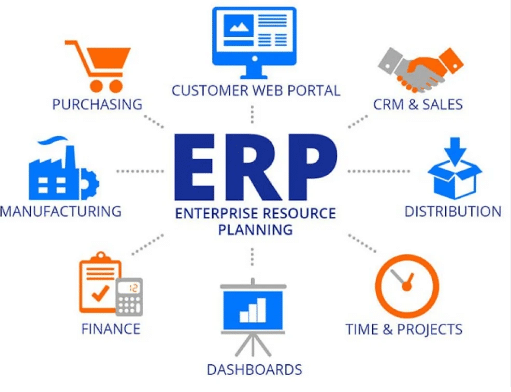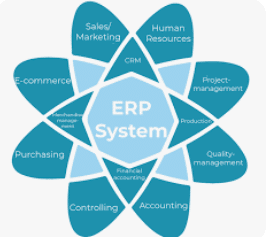blog.chip.co.id-HR Management Solution – In the dynamic and ever-evolving realm of Human Resource Management (HRM), organizations continually seek innovative solutions to optimize their HR processes and enhance their workforce management capabilities. Oracle HR, a comprehensive HR management solution offered by Oracle Corporation, has emerged as a powerful tool for businesses of all sizes and industries. In this extensive guide, we will delve into the world of Oracle HR, exploring its features, benefits, and how it can transform HR operations for organizations worldwide.

What is HR Management Solution?
Human Resource Management (HRM) is the strategic approach organizations use to manage and leverage their workforce effectively. HRM encompasses various functions, including recruitment, employee onboarding, payroll processing, performance evaluation, benefits administration, and talent development. The goal of HRM is to ensure that an organization’s human capital aligns with its goals and objectives.
The Importance of HR Management
HR Management is crucial for several reasons:
1. Talent Acquisition
Recruiting and hiring the right talent is essential for an organization’s success. HR professionals are responsible for identifying and bringing in individuals with the skills and qualifications necessary for various roles.
2. Employee Retention
Retaining top talent is equally important as attracting them. HR management includes strategies for employee engagement, satisfaction, and professional development, contributing to higher retention rates.
3. Compliance and Risk Management
HR teams ensure that the organization complies with labor laws and regulations, reducing the risk of legal issues and penalties. They also manage issues related to workplace safety and employee health.
4. Performance Improvement
HR management includes processes for setting performance expectations, evaluating employee performance, and providing feedback. This drives continuous improvement within the workforce.
Challenges in HR Management Solution
HR professionals face various challenges, including keeping up with changing labor laws, handling workforce diversity, and managing employee data securely. These challenges necessitate the use of advanced HR solutions like Oracle HR.
Oracle HR: An Overview
What is Oracle HR?
Oracle HR is a comprehensive Human Resources Management System (HRMS) offered by Oracle Corporation. It is designed to help organizations streamline their HR processes, enhance workforce management, and drive HR efficiency. Oracle HR provides a unified platform that encompasses various aspects of HR management, making it suitable for organizations of all sizes and industries.
Key Components of Oracle HR
Oracle HR comprises several key components, each addressing specific HR functions:
1. Oracle Human Resources Cloud
This core component serves as the central hub for HR processes, managing employee records, workforce structures, and organizational hierarchies. It provides a consolidated repository for employee data.
2. Oracle Talent Management Cloud
Talent Management Cloud focuses on attracting, developing, and retaining top talent within an organization. It includes modules for recruitment, performance management, and learning and development.
3. Oracle Payroll Cloud
Oracle Payroll Cloud handles all payroll-related processes, including payroll calculation, tax compliance, and direct deposit. It ensures accurate and timely compensation for employees.
4. Oracle Time and Labor
This module tracks employee work hours and attendance, facilitating accurate timekeeping and ensuring compliance with labor regulations.
Advantages of Oracle HR
Oracle HR offers several advantages to organizations:
1. Integration
Oracle HR seamlessly integrates with other Oracle Cloud applications, creating a unified ecosystem for finance, HR, and other business functions. This integration streamlines data flow and enhances collaboration.
2. Scalability
Oracle HR is highly scalable, making it suitable for businesses of all sizes, from startups to large enterprises with global operations. It adapts to an organization’s evolving HR needs.
3. Data-Driven Insights
Oracle HR provides powerful analytics and reporting capabilities, enabling data-driven decision-making. HR professionals can access real-time insights into workforce trends and performance, enhancing HR strategy.
4. Employee Self-Service
Oracle HR includes an employee self-service portal that allows employees to access and update their personal information, submit time-off requests, view pay statements, and participate in performance evaluations. This self-service functionality boosts employee satisfaction and reduces HR administrative tasks.
Core Features of Oracle HR
Let’s explore some of the core features of Oracle HR:
Recruitment and Applicant Tracking
Oracle HR streamlines the recruitment process with tools for posting job openings, managing applications, and conducting interviews. It offers applicant tracking capabilities to help HR professionals identify and select the best candidates efficiently.
Employee Self-Service
One of Oracle HR’s standout features is its employee self-service portal. This portal empowers employees to access and update their personal information, submit time-off requests, view pay statements, and engage in performance evaluations. The self-service functionality enhances employee satisfaction and reduces HR administrative tasks.
Payroll and Compensation Management
Oracle Payroll Cloud, a component of Oracle HR, ensures accurate and compliant payroll processing. It calculates employee compensation, handles tax deductions, and offers direct deposit options. This feature simplifies the complex task of payroll management, reducing errors and ensuring timely payments.
Performance Management
Performance evaluations are critical for employee development and organizational success. Oracle HR provides tools for setting performance goals, conducting evaluations, and offering feedback. This feature helps organizations identify top performers and areas that require improvement.
Talent Management
Oracle Talent Management Cloud focuses on attracting, developing, and retaining talent. It includes modules for recruitment, onboarding, learning and development, and succession planning. This comprehensive approach ensures that organizations can nurture their workforce for long-term success.
Implementing Oracle HR
Implementing Oracle HR requires careful planning and execution. Here are some key considerations:
Customization and Integration
Customize Oracle HR to align with your organization’s specific HR processes and requirements. Ensure seamless integration with existing systems, such as Enterprise Resource Planning (ERP) software or third-party applications.
Training and Support
Provide comprehensive training to HR professionals and employees who will be using the system. Oracle offers training resources and support to ensure a smooth transition to Oracle HR.
Data Migration
Migrating existing employee data into Oracle HR is a critical step. Data migration must be executed accurately to prevent data discrepancies and ensure that historical information is readily available.
Oracle HR Across Industries
Oracle HR is a versatile solution that caters to various industries. Let’s explore how it can benefit specific sectors:
Oracle HR in Healthcare
In the healthcare industry, compliance with regulations and effective workforce management are paramount. Oracle HR helps healthcare organizations streamline HR processes, maintain compliance, and ensure that the right staff is available to provide quality care.
Oracle HR in Manufacturing
Manufacturing companies often have complex workforce needs. Oracle HR simplifies labor management, tracks certifications, and ensures that the workforce aligns with production requirements, leading to improved efficiency and reduced downtime.
Oracle HR in Financial Services
Financial institutions require robust HR management to handle diverse roles and regulatory requirements. Oracle HR helps in talent acquisition, compliance management, and performance evaluation in the financial sector.
Challenges and Considerations
While Oracle HR offers numerous benefits, organizations should be aware of potential challenges and considerations:
Data Security
HR systems contain sensitive employee data. Ensuring robust data security measures, including encryption and access controls, is critical to protect against data breaches.
Scalability
As your organization grows, Oracle HR should scale accordingly. Evaluate whether the system can accommodate an increasing number of employees and changing HR needs.
Compliance
Different industries and regions have specific HR compliance requirements. Ensure that Oracle HR supports compliance with relevant laws and regulations, such as labor laws and data privacy regulations.
Conclusion
Oracle HR is a comprehensive HR management solution that empowers organizations to optimize their workforce management processes. With features spanning recruitment, payroll, performance management, and talent development, Oracle HR offers a holistic approach to HR management. Its integration capabilities, scalability, and data-driven insights make it a valuable asset for businesses in various industries. However, organizations must carefully plan their implementation, consider industry-specific needs, and address challenges such as data security and compliance.










